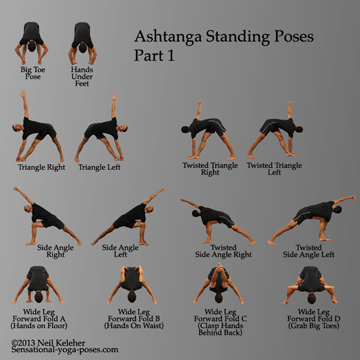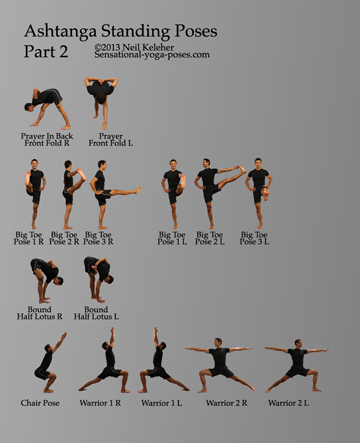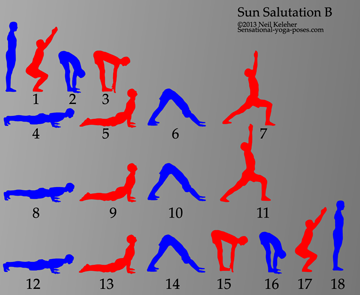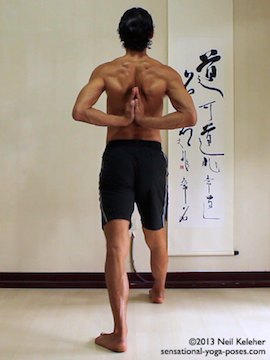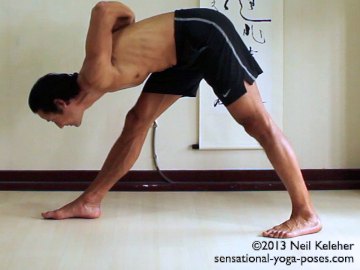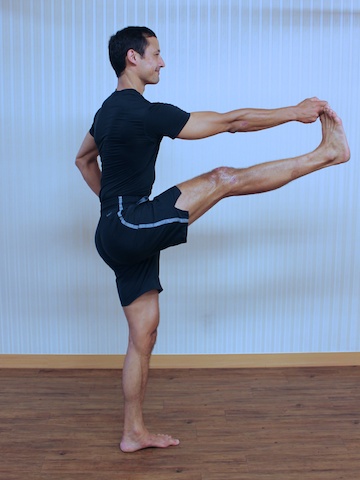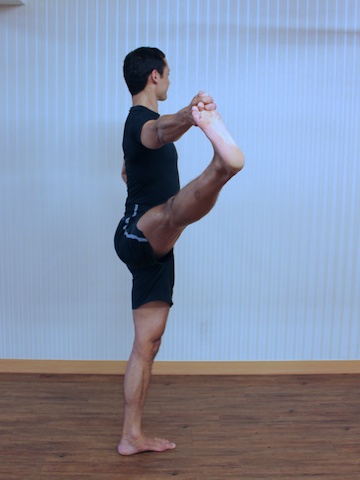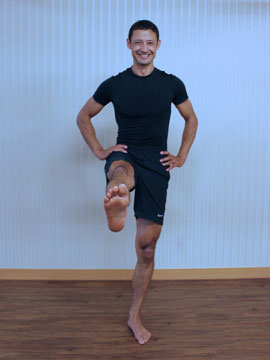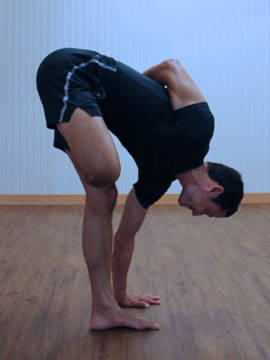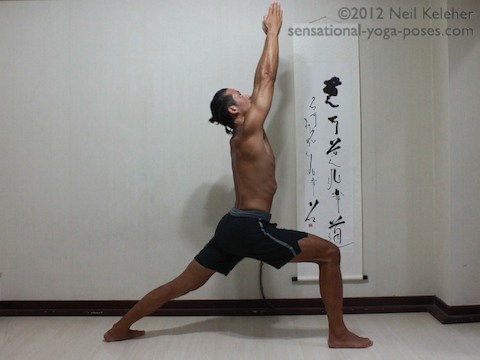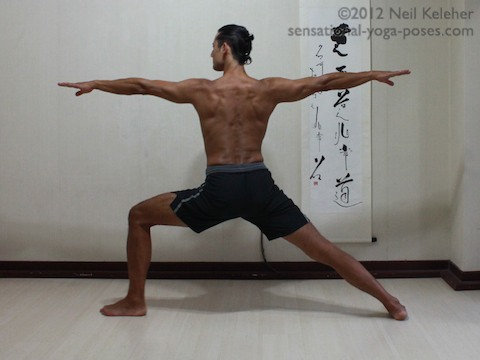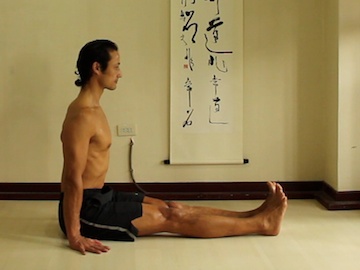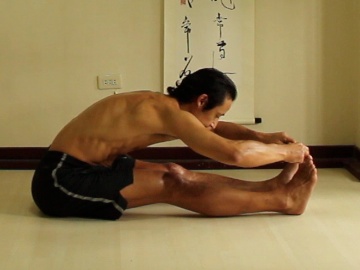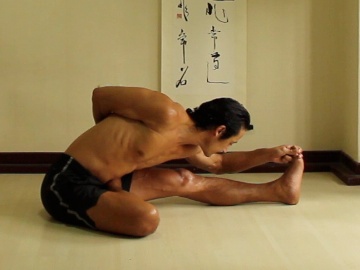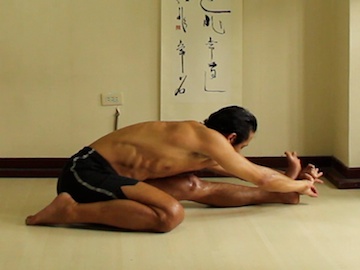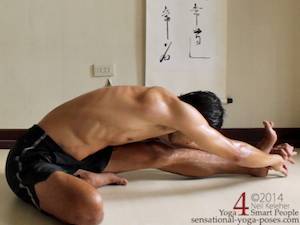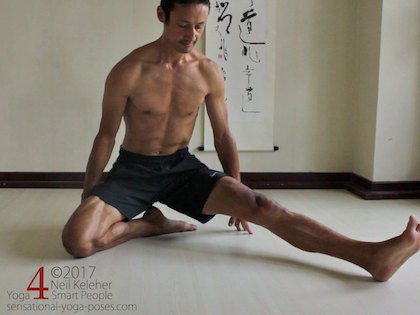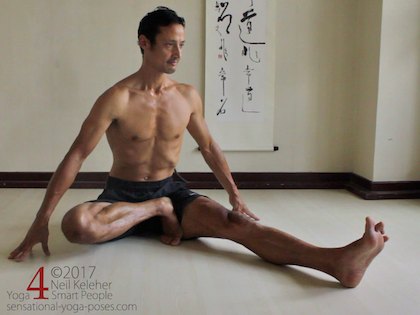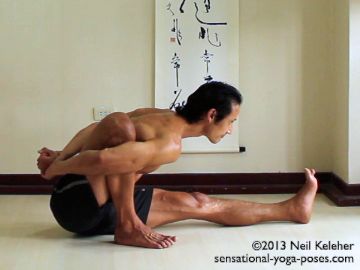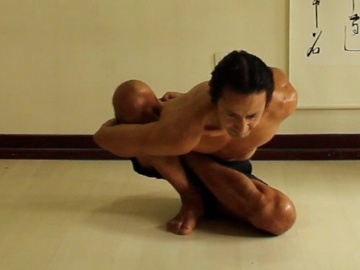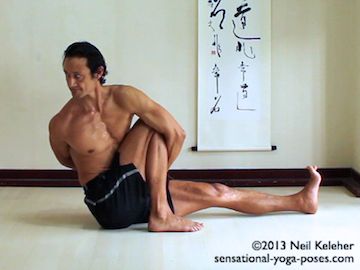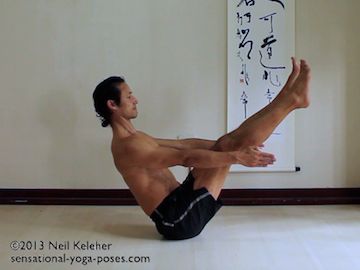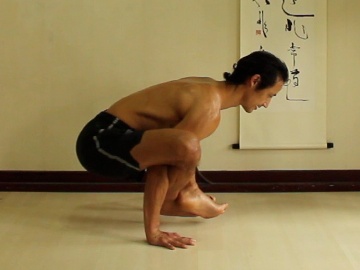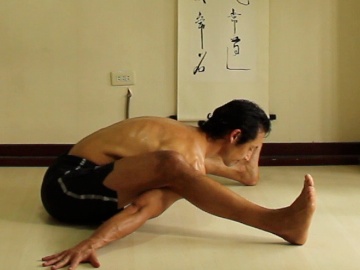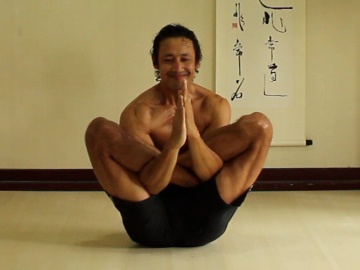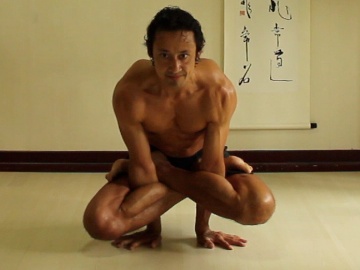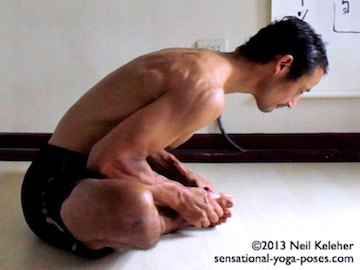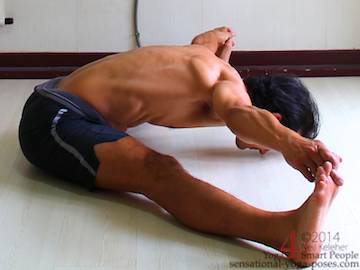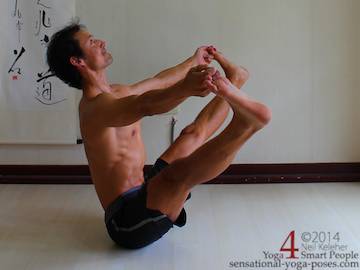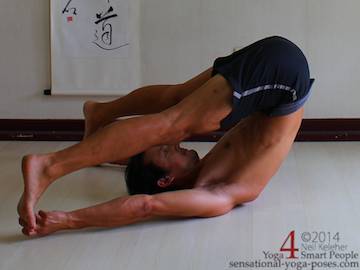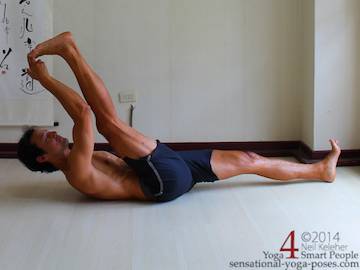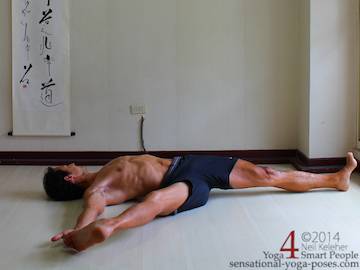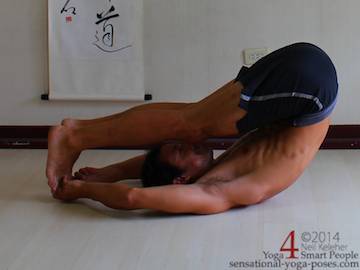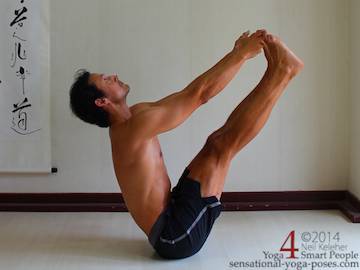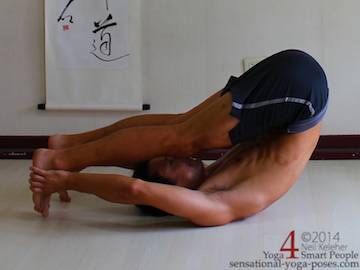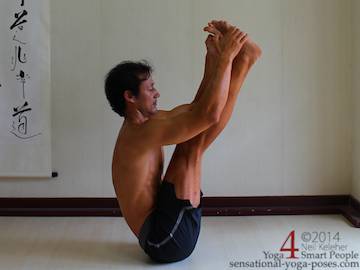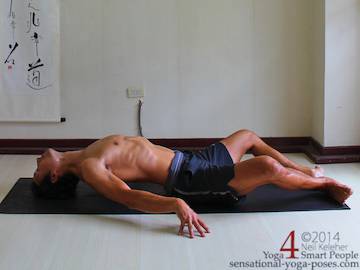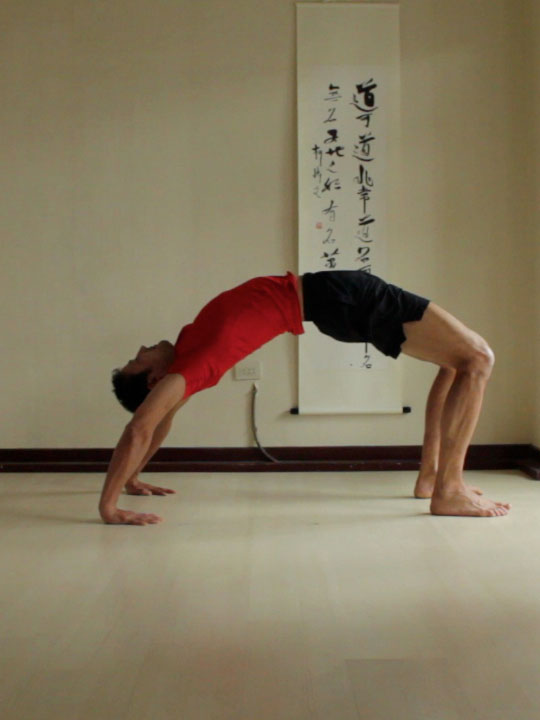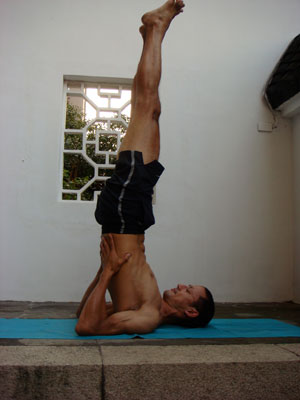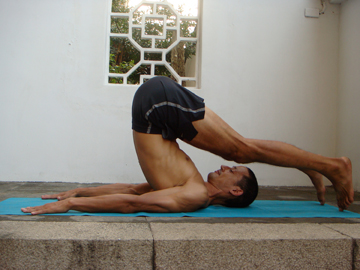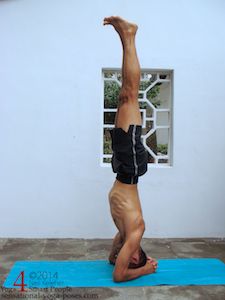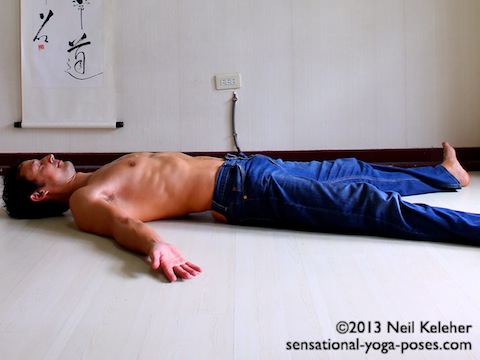The technique for moving in and out of each pose is called a vinyasa but the term "vinyasa" can also be used to indicated a particular breath linked movement.
As an example, sun salutations can be considered a series of breath linked movements or vinyasas.
What is important about vinyasa is knowing where you are and where you are going to.
You can focus on moving from where you are to where you want to be while feeling your body (and controlling it) at the same time.
Once you have arrived in a posture, assuming that the end point is a posture that you are going to hold, you can then focus on moving your awareness within your body, making adjustments as and when you need to.
Because the sequence is set, one of the things that you can focus on both while moving in and out of postures and while holding them is your breath.
In Ashtanga yoga, a special type of breath is used and it is called Ujjayi Breathing.
In this breathing method you narrow your throat passage so that your respiratory muscles have to do more work while you inhale and exhale.
The more work your respiratory muscles have to do, the more heat your create, and the more you sweat.
In Ashtanga Yoga, sweating is one mechanism for getting rid of toxins that are in your body. (Take that with a grain of salt. It may or may not be true.)
To help control your breath you can vary the amount that you constrict your throat and you can vary the way you use your breathing muscles.
Mula bandha is quite an advanced topic and for quite a while I've never talked about it because I didn't understand it fully enough. Only recently am I getting a better idea of what it is.
Anatomically, I believe that mula bandha helps to move and secure the sacrum (which is the base of the spine) relative to the pelvis.
Philosophically, I think that mula bandha is the ability to feel your entire body all at once, particularly your bones, while also having a clear idea of how you want your bones to be positioned or moved relative to each other.
Uddiyana Bandha is a compliment to mula bandha.
As with mula bandha, instruction on this can vary. I'd suggest learning to breath diaphragmatically first. Also practice gaining control of you transverse abdominus with agni sara.
Then work on pulling your lower belly in while using your diaphragm at the same time. You can either inhale, engage uddiyana (and mula) while using your diaphragm, and then relax both while exhale. Or you can exhale while keeping uddiyana engaged
These are suggestions, or guidelines.
Note your body's response to these practices. If you find yourself feeling anxious or tense, then practice without these locks and go back to basics, diaphragmatic breathing or costal breathing.
Once you've learned the sequences of poses and how to get in and out of them, you don't have to think about what pose to do next because you already know it. Instead you can focus on the pose that you are in and then focus on smoothly moving from that pose to whatever pose that follows it in the Ashtanga Yoga Sequence.
The primary series of Ashtanga yoga poses starts of with Sun salutations.
There are two types: Sun Salutation A (above) and Sun Salutation B (below).
One of the tricks to learning sun salutations (and the entire ashtanga sequence) is to break them down into smaller "practice elements."
Another name for sun salutation is surya namaska. For another look at sun salutations, and breaking them down, you can also read the surya namaskar steps article.
As well as helping you to remember the movements, practicing "elements" makes it easier to practice feeling your body as you do them.
Learning and practicing a few movements at a time makes it easier to hold what you are doing in short term memory.
You can then focus on doing the movements and feeling your body while you do them.
Read more about sun salutation a and sun salutation b.
For tips on how to jump back into chaturanga dandasana a little more quietly (and with a little more control) you can read ashtanga jump backs.
For more on getting stronger take a look at the chaturanga dandasana article and the similiarly titled chaturanga article.
Like sun salutations, the standing series of ashtanga yoga poses can broken into elements and learned a little bit at a time.
You can focus on a few poses at a time or even just one pose.
I'd suggest that at a maximum, especially if you are new to yoga, focus on learning four or five poses at a time.
This is a small enough number that you can easily retain in short term memory without having to stop and think.
But if you want to learn more in a single session then focus on learning groups of 2, 3 or 4 poses at a time.
To make remembering the sequence of poses easier it helps if you have a way of relating them to each other.
The next pair of poses is reverse prayer (aka parsvottanasana). The legs are in a similar position to revolving triangle but the hands are behind the back in prayer.
I should point out here that in the ashtanga yoga system, the right side is always done first.
Problems can arise in how you define which is the right side version of a pose.
The next posture, extended big toe pose, is three poses in one.
- Balancing on one leg you grab the toe of the lifted leg with that leg straight out in front.
- Then you open the leg to the side.
- Then you bring the leg back to the front and let go.
The fun part is holding the leg in place, unsupported for five breaths.
The next single leg balancing ashtanga yoga pose is half bound lotus or ardha baddha padmottanasana.
Again you are on one leg, the other leg is in lotus.
You grab the toe of the lotus foot from behind the back with the same side arm. And you bend forward with the free hand on the floor.
The standing series finishes with a mutant sun salutation with chair pose or utkatasana, followed by Warrior 1 and then warrior 2.
Note that warrior 2 breaks the "right side first" rule.
You do left side warrior 2 first, then the right side.
For a more recent write up on warrior 1 check out this article: getting deeper into warrior 1 yoga pose.
Ashtanga Yoga Poses part 1 has more details.
And ideally you can use the graphic below to see relationships between the poses in the second half of the Ashtanga standing series for yourself so that you can more easily remember the sequence of these poses.
The seated series of ashtanga yoga poses starts of similiar to the standing series, with some forward bends.
The first pose is actually sitting upright with legs straight (dandasana). If you've got tight hamstrings, this could be a stretch.
Following are three (or four) seated forward bending variations.
You grab the big toes, then the sides of the feet, then grab over the feet. Then finally you grab a wrist beyond the feet.
I've seen different variations of hand positions. In general they proceed from easier to more difficult.
Immediately following these forward bending yoga poses is a back strengthening yoga pose, reverse plank.
In this yoga pose you place your hands behind you, lift your hips with your legs straight. It acts as a counterpose for the forward bends, strengthening the muscles that have just been stretched.
The next two pairs of poses are also compliments.
Half bound lotus forward fold is followed by half hero forward bend.
In half bound lotus, one the foot is in lotus, again with the same side hand binding from behind.
For more instruction on preparing for the lotus foot position read half bound lotus yoga pose. For details on how to bind the lotus foot, read binding in seated half bound lotus.
In lotus position the thigh is externally rotated and the shin is displaced inwards with respect to the knee.
In half hero forward bend (triang muka ekapada paschimottanasana) the shin is folded to the outside of the thigh.
In this pose the thigh is internally rotated at the hip and the shin is displaced outwards with respect to the knee.
The next three poses are of the janu sirsasana type, a, b and c.
In janusirsasana type poses one knee is bend while the other is straight. And you bend forwards.
The C position has a similiar shin displacement to lotus. The only difference is the ankle is bend more than 90 degrees. (In lotus the front of the ankle can be stretched depending on the foot position that you use.)
Following the janu sirsasana series is the marichyasana series.
Here's where right and left can get confusing. General rule.
The marichyasana leg determines whether the pose is right or left.
In the first two marichyasana poses you bend forwards.
The third and fourth variations follow the same pattern but they are twists instead. You twist towards the marichyasana leg.
You also bind in these poses. And in general the binding arm is the hand that grabs.
Following the marichyasana series, the next few ashtanga yoga poses get a little bit tougher. Actually they got tough at the D variation.
The next yoga pose is boat pose.
You repeat 5 times, lifting up after each one. Then you balance in shoulder pressure pose with the legs on the shoulders, the hands supporting the body and the shins crossed in front of the arms.
Turtle yoga pose and sleeping turtle yoga pose follow.
In the first turtle yoga pose, you lay down between your legs and reach your arms under your legs. Legs are straight. In the second turtle yoga pose you cross ankles behind your head.
The next pose involves putting both legs in lotus then threading your arms through the gaps behind your knees. You then roll nine times in this position after first holding your face in your hands. This is called embryo in the womb. The 9 rolls represent the 9 months in the womb though some one told me it's actually 10 months. After, you roll up and balance on your hands (which are still inserted into your lotus!) This is called rooster pose.
For more on these seated poses check out ashtanga yoga poses 3.
The next set of poses could be thought of as a bit more relaxing.
Bound angle pose. How sweet. Feet together, knees bent to the side, bend forwards. (Grab the feet.)
Then two wide leg forward fold variations.
It's a little like the wide leg forward folds while doing the standing ashtanga yoga poses but first you bend forwards (while grabbing the big toes.) Then you fling yourself up and balance on your butt.
The next version you start of on your shoulders with legs in the same position. You roll up to balanced, then roll forward and land on your heels.
Again like the standing ashtanga yoga poses you do a supine extended big toe pose.
- Leg up,
- then to the side,
- then up again.
Then you lay on your back, legs above you, grab onto your toes and roll up to balance, upward facing big toe pose.
Then lay on your back again, grab the sides of your feet and roll up to balance in Upward facing forward bend.
The final pose prior to finishing is a bridge variation. I actually left this pose out for a long time because I was worried about protecting my neck.
A substitute is bridge yoga pose.
The finishing series includes wheel pose 3 times. You push up and hold, then lower, then push up without much of a rest.
A seated forward bend follows to cool down.
Shoulder stand, aka salamba sarvangasana is followed by plough pose which in turn is followed by ear pressure pose (press your knees into the sides of your ears).
Then you do an upside down supported lotus (no need to bind this time.)
You then roll into fish (legs still in lotus) and extended fish yoga pose (legs straight.)
Then its time for headstand.
The final two poses are lotus variations. You bend forward in the first one doing a yoga seal, grabbing the feet from behind.
Then you lift up.
